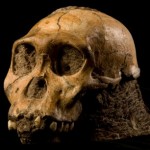
The recent discovery of a new hominid species, Australopithecus sediba, in South Africa has really excited us at African Portfolio. We apparently all share a fascination with paleoanthropology, who knew?! The new hominid fossil was found in an area called the “The Cradle of Mankind“. Previous fossil discoveries here have included Australopithecus africanus and Australopithecus robustus.
The Cradle of Mankind is located in Gauteng province, it covers a huge tract of privately owned land that is dotted with dolomitic limestone caves, a fossil haven. But it’s not exactly on the beaten track. Luckily there is an excellent museum in Johannesburg called the Origins Centre that is well worth a visit. The multi-media exhibit there traces the history of mankind from its very beginnings through to the present.
And while we’re on the subject of early man, there are several important and fascinating sites to visit in East Africa. If you’re planning a safari in Northern Tanzania, stop by the small museum in Oldupai Gorge (also known as Olduvai). The famous Leakey family spent time here in the 1930’s and discovered the remains of Australopithecus boisei and many other important fossils. Just 30 miles away in Laetoli, the discovery of bipedal footprints proved that mankind walked upright as early as 3.5 million years ago. These early hominid fossils (some are casts) are on display at the museum as well as a large array of early hominid artifacts and animal fossils.

Further north, the Leakey family and other paleoanthropologists are still busy in Koobi Fora and other sites around Lake Turkana. This is a unique area of Kenya, but hot and very much off the beaten track. Their blog is a little outdated but provides a fascinating insight into the life of a paleoanthropologist. The National Museum of Nairobi has many of the most important findings in its vaults. This is where the original Homo erectus and Homo habilis fossils reside. Since Nairobi is the main entry point for visitors to Kenya, it’s certainly worth an extra half day to see the origins of man with your own eyes.